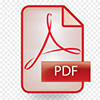Introducing STEM Education: Implications for Educating Our Teachers for the Age of Innovation
Review
The composers of this paper, present an introduction of STEM education in the Turkish context, with focus on the global and local educational policies implemented to integrate curriculum and teaching knowledge from the viewpoint of Turkish educational reform (Corlu, Capraro, & Capraro, 2014). Building STEM integration of curriculum can follow two perspective paths: 1) STEM education should enable correlation between subjects without ignoring the unique rigor, depth or characteristics of the overall discipline, 2) a perspective path whereby STEM curriculum guides the teacher affording the teacher to utilize their natural skills to exchange knowledge, skills, and beliefs across the disparate disciplines (Corlu, Capraro, & Capraro, 2014). The paper continues to discuss the implementation of STEM into the Turkish educational system, highlighting the success and failures of STEM. Notably, throughout the paper, the authors recognize a glaring deficiency in the preparation and skills of current educators who have not been trained in multiple disciplines, and who lack the ability to correlate mathematics with science, science with technology and vice versa. The focus and value of STEM education are to develop future generations of students capable of supporting national initiatives and sustainable economic growth through innovation driven by problem-solving and critical thinking within the interrelation disciples of STEM.

Abstract
Reforms in education of Science, Technology, Engineering, and Mathematics (STEM) disciplines have been particularly critical for the economic competitiveness of Turkey. There has been some criticism of the reforms at the teacher education level, claiming that Turkish teachers were not prepared to address the needs of their profession. The authors of this article introduced the STEM education model, which was designed with a critical investigation of the previous research on curriculum integration, STEM education, teaching knowledge, and Turkish educational reforms. By focusing on the interaction of mathematics and science, the model emphasized the importance of integrated teaching knowledge to successfully transition from the departmentalized model of teaching to an integrated model that promotes innovation.
Corlu, M. S., Capraro, R. M., & Capraro, M. M. (2014). Introducing STEM education: Implications for educating our teacher for the age of innovation. Education and Science, 39(171), 74-85.
